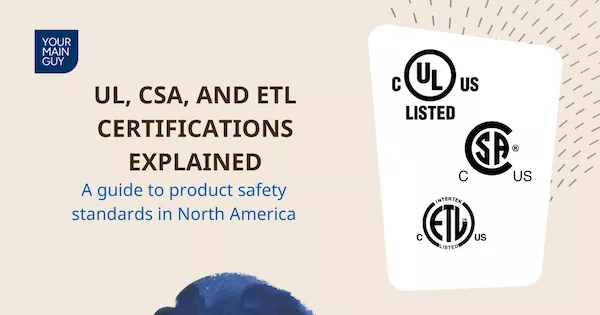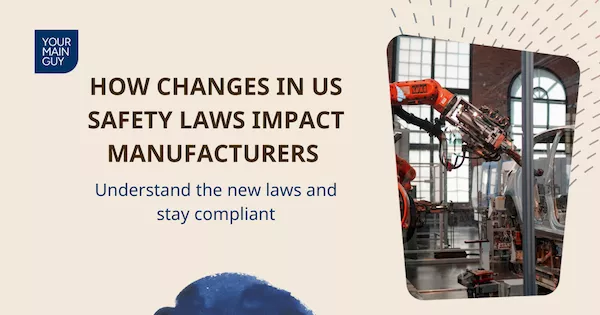Beyond Certification: Building a Culture of Safety in Product Development
Discover why safety certifications aren't enough and how Safety by Design principles create products that go beyond compliance to achieve true safety excellence.
Safety certifications are like a driver's license – they prove you know the rules, but they don't guarantee you'll be a good driver. In product development, the same principle applies. While certifications are crucial milestones, they represent the minimum standard, not the pinnacle of safety excellence.
Why Do Traditional Safety Certifications Fall Short?
Consider the case of the Boeing 737 MAX. Despite meeting all required certifications, the aircraft's design contained critical safety issues that led to tragic consequences. This stark example illustrates how compliance-based approaches to safety can miss crucial vulnerabilities that emerge from complex system interactions.
Traditional safety certifications often create a false sense of security. They can reduce safety to a series of checkboxes, encouraging teams to focus on meeting specific requirements rather than understanding and addressing underlying risks. This checkbox mentality can blind organizations to emerging risks and novel failure modes that weren't contemplated when the certification standards were created.
Moreover, certifications are inherently retrospective – they're based on known issues and historical incidents. In today's rapidly evolving technological landscape, we need approaches that can anticipate and prevent tomorrow's safety challenges, not just yesterday's known problems.
What Does "Safety by Design" Really Mean in Practice?
Safety by Design is more than just a catchphrase – it's a fundamental shift in how we approach product development. At its core, it means treating safety as a primary design constraint rather than a post-development verification step.
Consider how Volvo approached safety in automotive design. Rather than simply meeting safety standards, they made safety a core brand value and design principle. This led to innovations like the three-point seatbelt, which they made freely available to other manufacturers because they prioritized public safety over competitive advantage.
Key principles of Safety by Design include:
- Inherent Safety: Design out potential hazards rather than controlling them through protective measures
- Defense in Depth: Create multiple layers of protection against failure
- Fail-Safe Design: Ensure systems fail in a predictable, safe manner
- Error Tolerance: Design systems that can handle human error without catastrophic consequences
Companies like Toyota demonstrate these principles through their "jidoka" (automation with a human touch) approach, where systems are designed to detect abnormalities and stop automatically, preventing safety issues before they escalate.
How Can We Make Safety Reviews More Than Just Meetings?
Traditional safety reviews often devolve into bureaucratic exercises where teams rush through checklists to meet deadlines. To transform safety reviews into valuable tools for improvement, organizations need to rethink their approach.
Effective safety reviews should:
- Focus on learning rather than judgment
- Encourage open discussion of near-misses and potential issues
- Use data-driven metrics to track safety performance
- Integrate safety considerations into daily development activities
Tesla's approach to safety testing provides an interesting example. They combine real-world data from their vehicle fleet with simulation testing to identify and address safety issues proactively. This creates a continuous feedback loop that goes far beyond periodic safety reviews.
Meaningful safety metrics might include:
- Leading indicators like near-miss reports and safety suggestion implementation rates
- Time to resolution for identified safety issues
- Percentage of designs modified due to safety concerns
- Employee safety training completion and effectiveness scores
Where Should Safety Considerations Begin in the Design Process?
Safety considerations must begin at the earliest stages of product conception. This early integration allows teams to identify and address potential safety issues when changes are least expensive and most effective.
A structured approach to early-stage safety integration includes:
- Preliminary Hazard Analysis
- Identify potential hazards before detailed design begins
- Consider both normal operation and potential misuse scenarios
- Document assumptions and limitations
- Safety Requirements Definition
- Translate hazard analysis into specific design requirements
- Define safety performance criteria
- Establish verification methods
- Architecture-Level Safety Analysis
- Evaluate how system components interact
- Identify potential failure propagation paths
- Define safety-critical interfaces
Companies like ASML, which produces semiconductor manufacturing equipment, exemplify this approach. They begin safety analysis during the concept phase, using sophisticated modeling tools to predict and prevent potential safety issues in their complex systems.
When Do Teams Need to Think Beyond Compliance?
Thinking beyond compliance means adopting a mindset where safety isn't just about meeting standards – it's about creating the safest possible product within given constraints.
This involves:
Creating Safety Margins
- Building in additional safety factors beyond minimum requirements
- Considering worst-case scenarios and edge cases
- Anticipating future safety requirements
System-Level Safety Thinking
- Understanding how components interact in unexpected ways
- Considering environmental and user factors
- Evaluating long-term safety implications
Continuous Improvement
- Regular review and update of safety practices
- Learning from near-misses and minor incidents
- Staying ahead of evolving safety standards
SpaceX demonstrates this approach in their rocket development program. While meeting all NASA safety requirements, they've implemented additional safety features and redundancies based on their own analysis and testing.
Who Needs to Be Part of the Safety Conversation?
Safety isn't just the responsibility of safety engineers – it requires input and commitment from every level of the organization.
Key stakeholders include:
Leadership Team
- Setting safety culture and priorities
- Allocating resources for safety initiatives
- Demonstrating commitment through actions
Design and Engineering Teams
- Incorporating safety considerations into technical decisions
- Identifying potential safety issues in designs
- Developing safety-conscious solutions
Production and Quality Teams
- Implementing safety measures in manufacturing
- Monitoring safety-critical processes
- Providing feedback on practical safety challenges
End Users and Maintenance Personnel
- Contributing real-world usage perspectives
- Identifying potential misuse scenarios
- Providing feedback on safety features
How Can We Train Teams to Think "Safety First"?
Building a safety-first mindset requires more than traditional training programs. It needs a comprehensive approach that combines education, experience, and empowerment.
Effective Safety Training Elements
- Experiential Learning
- Hands-on safety scenarios
- Virtual reality safety simulations
- Root cause analysis workshops
- Continuous Education
- Regular safety refresher courses
- Updates on new safety technologies and methods
- Cross-training across disciplines
- Cultural Development
- Building psychological safety for raising concerns
- Celebrating safety innovations and improvements
- Creating safety champions across teams
- Practical Application
- Safety-focused design reviews
- Mentoring programs
- Regular safety challenges and exercises
Companies like DuPont have shown how comprehensive safety training programs can transform organizational culture and improve safety outcomes across all operations.
How to Move Toward a Comprehensive Safety Culture
Building a culture of safety goes beyond meeting certification requirements – it requires a fundamental shift in how organizations think about and prioritize safety in product development.
Key takeaways for implementing this transformation include:
- Start safety considerations at the earliest stages of design
- Involve all stakeholders in safety discussions
- Create systems that make it easy to do the safe thing
- Build in safety margins beyond minimum requirements
- Invest in comprehensive safety training and culture development
The long-term benefits of this approach extend beyond safety improvements. Organizations that successfully implement a safety-first culture often see:
- Improved product quality
- Reduced development costs
- Enhanced brand reputation
- Increased employee engagement
- Better customer satisfaction
The journey to building a comprehensive safety culture is continuous and requires ongoing commitment. However, the investment in going beyond basic certification requirements pays dividends in both human and business terms.
Take action today by assessing your organization's current safety culture and identifying opportunities to move beyond compliance toward true safety integration. Remember, every step toward better safety practices is a step toward better products and better outcomes for everyone involved.




